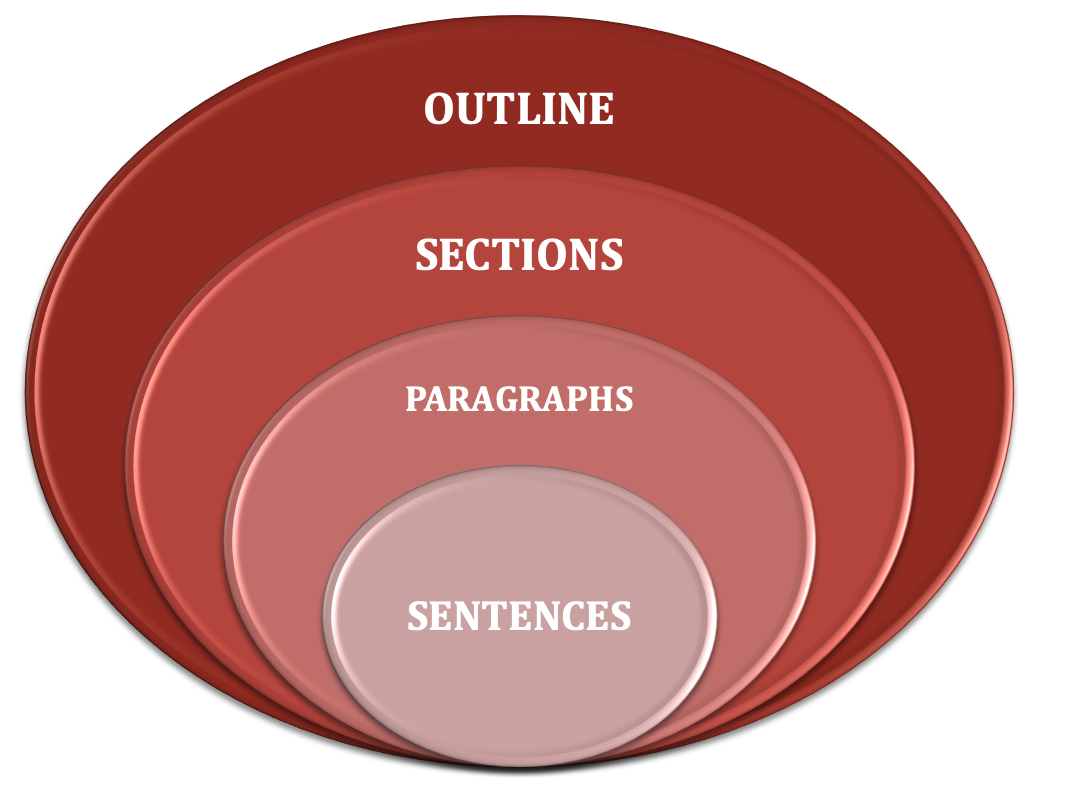5 Doing it: The process of researching and writing, organising your paper
5.1 The process of “researching while writing”
Getting help from other sources: the writing center, students, other lecturers, etc.
Learn from the feedback you have received (on previous term papers) but also learn from your dissertation for your later life
5.2 Slogging through
You can do it!

Keep a positive attitude, but don’t rest on your laurels
What to do if you don’t understand things in the papers you are reading
Do not wait till the last moment
… not in doing your writing, or your data work or your presentation of results
Don’t be a perfectionist who ends up writing half a paper – write an OK paper, and then make a good paper, and then make it great paper.
“The perfect is the enemy of the good”
Do you know what the ‘…’ bits mean in this quote? This means a break in the direct quote. What do the square brackets ‘[blah]’ mean? This means that whatever is in the square brackets is a paraphrase of the authors’ words. We return to citation formats under ‘Doing a literature review (and citing references)’.
[Writing] begins with mere fluency, getting the stuff down on paper. And it ends with revising again and again, until you’ve removed all the traps and ugliness. … [Sitting] down to write can be a problem, for it is then that your subconscious, which is dismayed by the anxiety of filling up blank pieces of paper, suggests [goofing off or doing any other type of chore]. [Fight] doubt – the conviction that everything you’ve done so far is rubbish-will wash over you from time to time. … The only help is a cheerful faith that more work will raise even this rubbish up to your newly acquired standards. Irrational cheerfulness is hard to teach but good to have for any work.
-(McCloskey and Ziliak 2019)
5.3 Organising your paper
If you read journal articles, you will see these are organised into sections in a standard way, with some variations. This is more or less as follows.
Standard format
- (Abstract)
- Introduction
- (Literature review)
- (Data description and background)
- (Model/theory)
- Analysis and results
- Robustness checks, extensions
- Conclusion
- List of works cited
- (Appendices: mathematical proofs, additional results, research materials, etc.)
Sometimes authors put all tables of results at the end of a paper. I don’t find this convenient for the reader, but some people seem to like it. In any case, as I usually read papers on a computer or e-reader, I find it extremely helpful when all content uses ‘internal hyperlinks.’ E.g., whenever you refer to ‘table 6’, try to make sure that the text ‘table 6’ contains a link to table 6. Good document preparation tools (word processors, Latex, R-markdown) can make these links automatic, and can make the numbers automatically update as you add more tables.
5.3.1 Abstract
A brief synopsis of your paper (100-200 words) and its findings, perhaps mentioning the basic approach and justification. A “sales pitch”.
Below, an example from an award winning undergraduate thesis at UC Berkeley
This paper uses a pairing process to test the hypothesis that home prices are affected by school district quality. Combining a hedonic price model with a regression discontinuity design, I compare the selling prices of pairs of homes that are no more than 0.4 miles from each other and are highly similar across all other characteristics, but which lie in school districts of different quality. My unique pairing methodology more robustly controls for the confounding effects of home characteristics than previous research which relied on linear regression models. I estimate that a one standard deviation increase in school district quality is associated with a 3.3% increase in home prices
5.4 Outlining, structuring, and refining your paper
In doing your writing, go from ‘large to small’. Always ask yourself ‘how does this relate to my question and support my analysis?’
Go from:
Outline
to
Sections
to
Paragraphs
to
Sentences
Ask: “What is the purpose of every sentence?”
Does it serve the purpose of the argument or explanation that you are making in this paragraph/section/paper?
Is it in the right section?
Have you already said it?
Why make an outline? How to do it?

Create an outline, take notes, write down your ideas and then integrate these into the outline
Balance the different parts of your paper: outlining, literature review, theory, data work, econometrics, stating results, summarizing conclusions, etc.
- these will interact with one another and you cannot completely separate them.
Cutting and pasting might be part of your process, but you don’t want your final submission to be a cut and paste collage.
[Write] out the notes as paragraphs, then print them out, cut them up with scissors, finding the best arrangement. - McCloskey (2000)
This is “old-school” but a good way of thinking about things in general, whether in print or on a screen.
…Doing theory and empirics, integrating it into the outline, etc.
Works Cited
McCloskey, Deirdre N., and Stephen Thomas Ziliak. 2019. Economical Writing: Thirty-Five Rules for Clear and Persuasive Prose. Third edition. Chicago Guides to Writing, Editing, and Publishing. Chicago ; London: The University of Chicago Press.